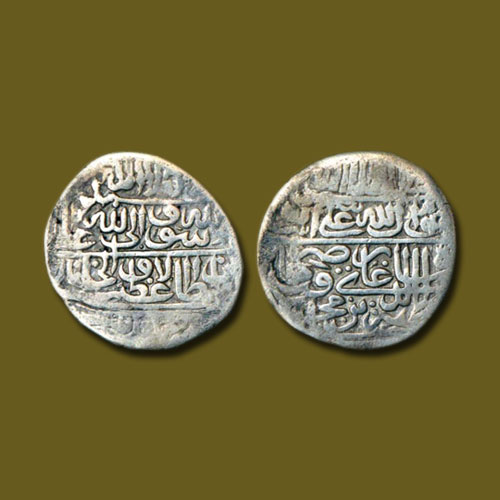Shah Tahmasp I was born today
2020-02-22 Sat
Tahmasp I was the second and one of the most powerful Shah of Iran, who enjoyed the longest reign of any member of the Safavid dynasty. He came to the throne aged ten in 1524 and ruled till 1576 AD.Tahmasp was born on 22nd February 1514 to Ismail I, the founder of the Safavid dynasty. He is known for the asylum he gave to the fugitive Mughal Emperor Humayun as well as Suleiman the son Bayezid, which is depicted in a painting on the walls of the Safavid palace of Chehel Sutoon.
Humayun was forced to flee India under the Afghan resurgence led by Sher Shah Suri and sought refuge with Tahmasp. Tahmasp granted Humayun asylum on the condition he converts to Shi'ism. In 1545, a joint expedition under the charge of Humayun subsequently engaged Qandahar which was occupied by his rebellious brother Kamran. Humayun conquered the fort and city, nominally on behalf of Tahmasp.
During the reign, he issued gold and silver coins in the denomination of Shahi, Ashrafi, and Mithqal. These coins were struck at Baghdad, Herat, Isfahan, Mashhad, Qazvin, Shiraz, Tabriz, Yazd, Qandahar, Qumm, Jafarabad, etc.
Here is an image of Humayun’s silver Shahrukhi jointly issued with Tahmasp I from Qandahar mint. Both the facts - Humayun's conversion to Shi'ism and his vassalage to Tahmasp are reflected in legends on this coin. The obverse of a coin depicts the Shi'a version of Kalima, and the name and titles of Tahmasp partly visible. On the other hand, the reverse of a coin engraved Shi'a version of Kalima, the full name Muhammad Humayun bin Zahiruddin Muhammad Babur Badshah Ghazi partly visible. The conquest of Qandahar allowed Humayun a much needed strategic foothold to begin his re-conquest of India.
Image Source: Classical Numismatic Gallery
Latest News
-
Panchala King Bhanumitra Copper Coin
2024-04-26 FriThe Panchala kingdom was ruled by the Mitra kings. The Mitra kings are known to issue coins and most...
-
Mahatma
2024-04-25 ThuIndia Post issued a commemorative postage stamp on #LalaHansraj, also known as Mahatma Hansraj for�...
-
Berar Mint of Muhammad Akbar
2024-04-25 ThuBerar was a kingdom located in the Deccan region, with Elichpur as its capital. It was one of the Su...
-
Janma Kalnayak of Bhagwan Mahavir
2024-04-24 WedOn 21st April 2024 which was the 2550th Janma Kalnyanak of Bhagwan Mahavir Swami, PM Modi unveile...
-
Gold Pagoda of Vijaynagar Empire King Deva Raya I
2024-04-10 WedKing Deva Raya I of the Vijayanagara Empire was a patron of Kannada literature and architecture. He ...

